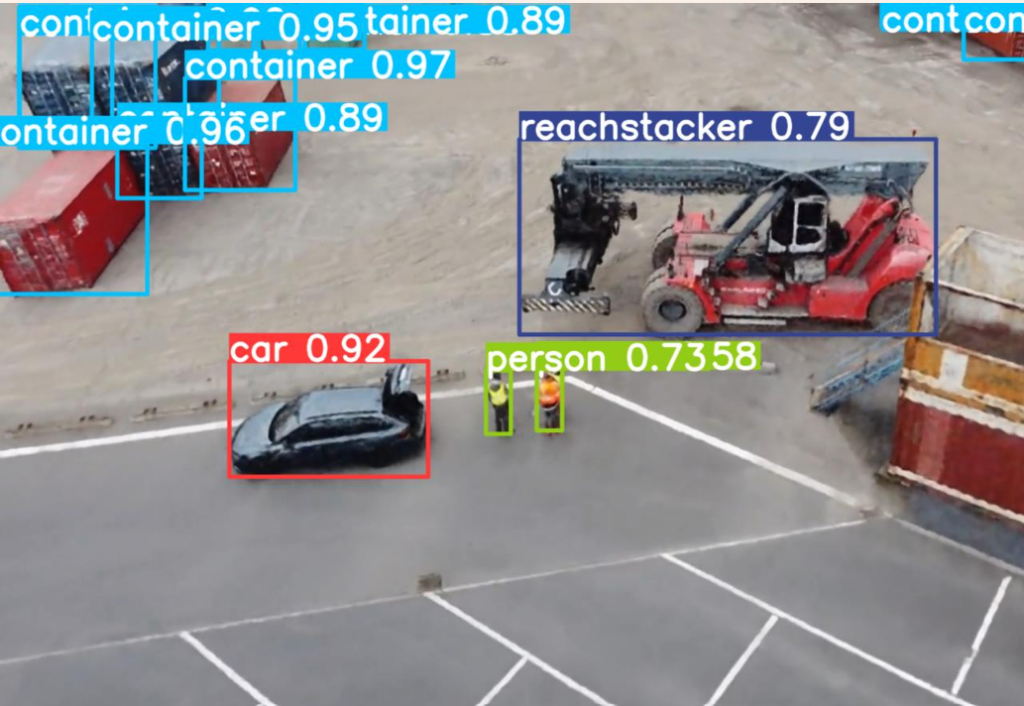
Digital Twin
The digital twin developed in Unity represents a highly detailed digital copy of the indoor terminal environment of Dresden or Riesa. The purpose of this artifact is to create new and hard-to-generate data such as rusted containers and video material under specific wind, weather, and daily conditions. Additionally, drone flights can be realized here, delivering results realistically without risks.
NeRF
Together with a student from the University of Hamburg, 3D environments were extracted from video footage at the ports using the so-called NeRF approach. In this method, a neural network learns from video materials and gains an impression of the 3D objects in this environment. This also enables drone flights in the environment that did not actually take place in reality. Applying object detection algorithms (here YOLO) yielded promising results.


MapBox
Another digital twin, called MapBox, represents a less detailed depiction of the port. MapBox displays the current state of the port, showing the identity and location of the containers, using a map representation that displays the containers. The twin can be used by ground personnel for route planning for transport carts and by other stakeholders who benefit from an overview of the port's condition.
Image processing models
In ports worldwide, image recognition technology is increasingly being used as an indispensable tool to enhance security and efficiency. By analyzing visual data in real-time, image recognition models enable precise monitoring of cargo movements and early detection of suspicious activities. Machine learning and artificial intelligence enable automated responses to potential risks, drastically reducing response times and minimizing human errors. This technology not only contributes to security but also optimizes operations by improving the efficiency of port logistics. In an era of increasing trade volumes and complex security threats, the integration of image recognition technologies represents a significant advancement for ports to meet the challenges of the 21st century.
